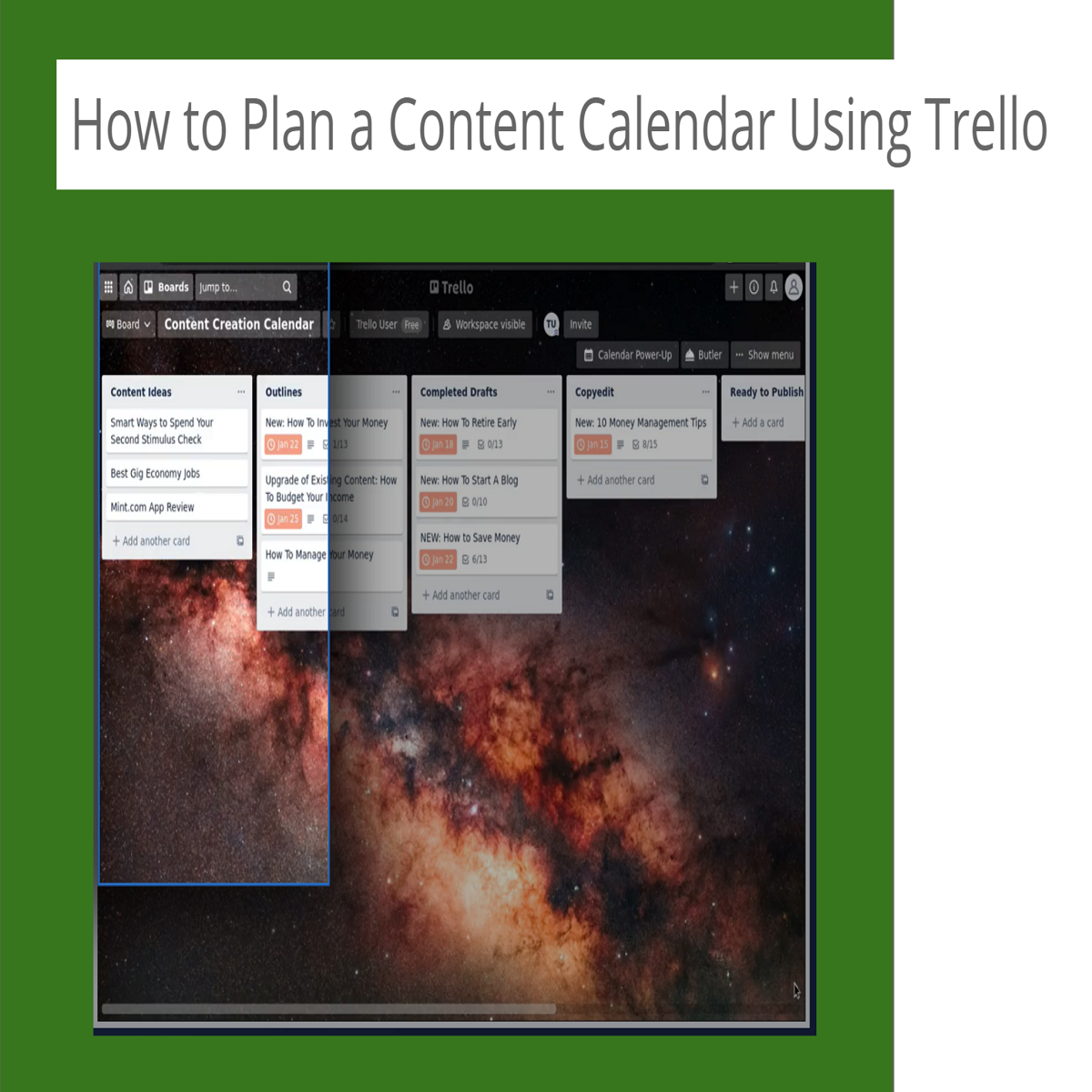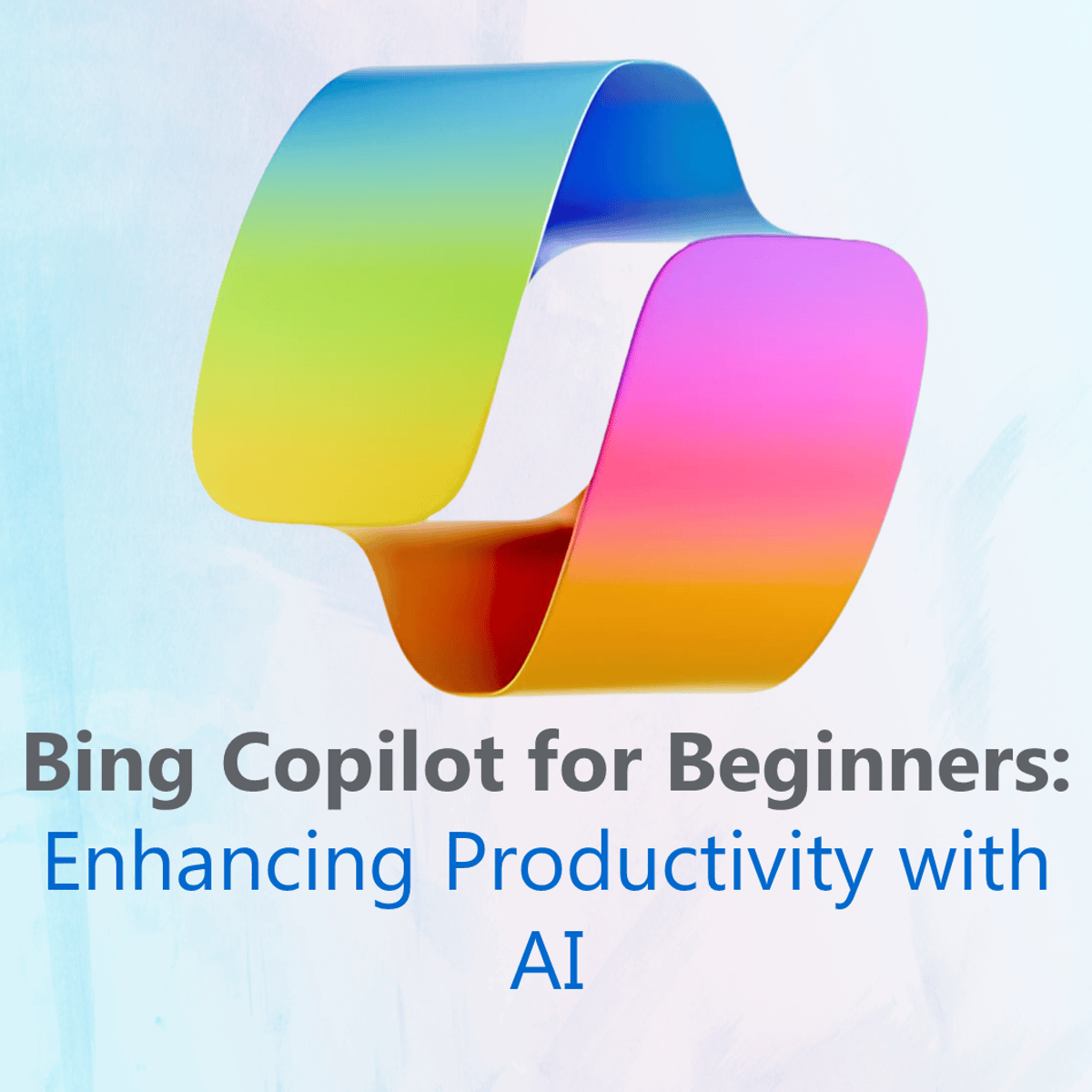Content Strategist
Content Strategist: Shaping Communication in the Digital Age
A Content Strategist is a professional who plans, develops, and manages content to meet specific business objectives. This role involves understanding an organization's goals, identifying target audiences, and creating a roadmap for how content will be created, delivered, and governed across various channels. Think of them as the architects of an organization's message, ensuring every piece of content serves a purpose and contributes to a larger strategic vision.
Working as a Content Strategist can be deeply engaging. You might find satisfaction in solving complex communication puzzles, aligning diverse stakeholder needs, or seeing your strategies translate into tangible business results. The role often involves a blend of creative thinking and analytical rigor, making it appealing for those who enjoy both understanding the big picture and diving into the details of execution.
Introduction to Content Strategy
Defining the Discipline
Content strategy is the practice of planning for the creation, delivery, and governance of useful, usable content. It's not just about writing articles or creating videos; it's about understanding the 'why' behind the content. A strategist determines what content is needed, why it's needed, who it's for, how it will be structured, and how it will achieve business goals.
This discipline requires a holistic view, connecting content decisions to overall business objectives, user needs, and brand identity. It guides content creation efforts, ensuring consistency, relevance, and impact across all communication channels. Effective content strategy prevents content chaos and ensures resources are used efficiently.
Ultimately, content strategy aims to make content a valuable business asset. It transforms content from a mere byproduct of marketing or communication activities into a planned, purposeful component of an organization's success.
Historical Evolution
The roots of content strategy can be traced back to technical communication and information architecture, fields focused on making complex information accessible and usable. However, the rise of the internet and digital media dramatically accelerated its evolution and importance.
In the early days of the web, content was often an afterthought. As businesses realized the power of online content for marketing, sales, and customer support, the need for a more planned approach became evident. This led to the emergence of content strategy as a distinct field, initially focused heavily on website content.
Today, content strategy encompasses a much broader scope, including social media, mobile apps, email marketing, internal communications, and even offline materials. The role has evolved from managing website text to orchestrating complex content ecosystems across multiple platforms and touchpoints.
Importance in Modern Business
In today's information-saturated world, content strategy is more critical than ever. Businesses compete not just on products and services, but on the quality and relevance of the information and experiences they provide. A strong content strategy helps cut through the noise and connect meaningfully with audiences.
It ensures that content aligns with brand values and business goals, driving key outcomes like lead generation, customer retention, and brand awareness. By understanding user needs, content strategists help create experiences that are genuinely helpful and engaging, fostering trust and loyalty.
Furthermore, content strategy provides a framework for managing content efficiently and sustainably. It establishes clear processes, roles, and guidelines, ensuring content quality and consistency while optimizing resource allocation. This strategic oversight is essential for navigating the complexities of modern digital communication.
What Does a Content Strategist Do?
Core Objectives: Aligning Content with Business Goals
The primary objective of a Content Strategist is to ensure that all content produced by an organization supports its overarching business goals. This involves translating high-level objectives, like increasing market share or improving customer satisfaction, into specific content initiatives.
They work to understand the target audience deeply – their needs, pain points, behaviors, and preferences. This understanding informs the creation of content that resonates with the audience and guides them through their journey, whether it's making a purchase, learning a new skill, or solving a problem.
Strategists define key performance indicators (KPIs) to measure content effectiveness. They track metrics like engagement rates, conversion rates, and search rankings to evaluate performance and iterate on the strategy, ensuring content continuously delivers value.
These introductory courses provide a solid overview of content marketing strategy and digital content planning.
These books offer comprehensive guides on using content for business growth and customer engagement.
Key Activities: Audits, Governance, and Workflow
A significant part of a Content Strategist's work involves conducting content audits. This means systematically inventorying and evaluating existing content to identify gaps, redundancies, inconsistencies, and opportunities for improvement. Audits provide a baseline for strategic planning.
Developing content governance models is another key activity. This includes defining roles and responsibilities, setting standards for quality and style (often through style guides), and establishing processes for content creation, approval, publishing, and maintenance. Effective governance ensures consistency and manages risk.
Content Strategists also design content workflows. They map out the entire lifecycle of content, from ideation to archiving, optimizing processes for efficiency and collaboration. This might involve selecting and configuring content management systems (CMS) or other content technologies.
Understanding how to manage digital assets and structure information is crucial. These courses cover metadata management and information architecture fundamentals.
This book is a foundational text on web content strategy, covering audits and governance.
Differentiating from Content Creators and UX Designers
While there can be overlap, a Content Strategist's role is distinct from that of a content creator (like a writer or videographer) or a User Experience (UX) designer. Content creators focus primarily on producing individual pieces of content.
The Content Strategist, in contrast, focuses on the bigger picture: the overall plan, structure, purpose, and management of content across the entire organization or product. They define the "what" and "why" before the creators tackle the "how."
UX designers focus on the overall user experience of a product or service, including usability, navigation, and interaction design. While content is a vital part of the user experience, the Content Strategist specializes specifically in the planning and structure of that content, often collaborating closely with UX designers to ensure alignment.
Essential Skills for Content Strategists
Strategic Thinking and Systems Design
At its core, content strategy requires strong strategic thinking. This means being able to see the big picture, understand complex systems, and connect content decisions to broader business objectives and user needs. Strategists must think long-term and anticipate future content requirements.
Systems thinking is crucial for designing scalable and sustainable content ecosystems. Content strategists need to design frameworks, models, and processes that govern how content is planned, created, managed, and measured across different teams, platforms, and formats.
This involves understanding information architecture, taxonomy, metadata, and content modeling principles. They design structures that make content findable, reusable, and adaptable for various contexts and audiences, ensuring consistency and efficiency.
These courses delve into strategic content marketing and information architecture, key components of systems thinking in this field.
This book offers a concise overview of content strategy elements, emphasizing strategic planning.
Data Literacy: Analytics and Performance Measurement
Content strategists must be data-literate. They need to understand how to use analytics tools to measure content performance, track key metrics, and derive actionable insights. This data informs strategic decisions and helps demonstrate the value of content initiatives.
This involves familiarity with web analytics platforms (like Google Analytics), social media analytics, SEO tools, and potentially customer relationship management (CRM) data. They analyze user behavior, content engagement, conversion rates, and audience demographics.
Beyond just reporting numbers, they need the ability to interpret data, identify trends, and translate findings into recommendations for improving content effectiveness. Data provides the evidence needed to justify strategic choices and optimize content performance over time.
Understanding how to analyze marketing data, including text and network analysis, is valuable for content strategists.
This book explores using data to define and measure content success.
Stakeholder Management and Cross-Functional Collaboration
Content strategy often involves working across multiple departments and teams, including marketing, product development, sales, customer support, legal, and IT. Therefore, strong stakeholder management and collaboration skills are essential.
Strategists need to understand the perspectives and priorities of different stakeholders, build consensus, and navigate competing interests. They must effectively communicate the value and rationale behind the content strategy to gain buy-in and ensure alignment across the organization.
Facilitation skills are important for leading workshops, brainstorming sessions, and governance meetings. They act as advocates for both the user and the business, bridging communication gaps and fostering a shared understanding of content goals and processes.
Effective communication, including persuasive writing and presentation skills, is vital for stakeholder management.
Emerging Skill: AI Prompt Engineering for Content Systems
As artificial intelligence (AI), particularly generative AI like ChatGPT, becomes more integrated into content workflows, prompt engineering is emerging as a valuable skill for content strategists. This involves crafting effective prompts to guide AI tools in generating, summarizing, or analyzing content.
Strategists need to understand how to leverage AI responsibly and ethically within content systems. This includes developing prompts that align with brand voice, maintain accuracy, and meet specific content objectives. They may also contribute to developing AI usage guidelines within the content governance framework.
This skill isn't just about generating text; it's about strategically using AI to augment content processes, improve efficiency, and potentially uncover new insights from content data. Understanding the capabilities and limitations of AI tools is key.
These courses offer introductions to using AI tools like ChatGPT and others for content creation and marketing tasks, relevant to the emerging skill of prompt engineering.
Content Strategist Career Pathways
Common Entry Points: Content Writing vs. UX Research
There isn't one single path into content strategy. Many professionals transition from related fields. Common entry points include roles in content creation, such as content writing, copywriting, or technical writing, where individuals develop strong communication skills and an understanding of audience needs.
Another frequent pathway is through User Experience (UX) research or design. Professionals in these areas gain expertise in user-centered methodologies, information architecture, and understanding user behavior, which are foundational to content strategy.
Other related fields like marketing, communications, library science, or journalism can also serve as springboards. Building a portfolio that demonstrates strategic thinking, even through smaller projects or specific aspects of previous roles, is key for transitioning.
These courses cover foundational skills often found in entry-point roles like technical writing and user research.
Progression from Specialist to Leadership Roles
Career progression often involves moving from specialist roles (e.g., focusing on SEO content strategy or UX writing) to broader, more senior strategist positions. With experience, individuals take on larger projects, manage more complex content ecosystems, and lead strategy development.
Further advancement can lead to leadership roles, such as Senior Content Strategist, Lead Content Strategist, or Head of Content Strategy. In these positions, individuals typically manage teams of strategists and creators, oversee the entire content function, and contribute to higher-level business strategy.
Leadership roles require not only deep expertise in content strategy but also strong management, mentorship, and strategic planning skills. They are responsible for setting the vision for content and ensuring its successful execution across the organization.
Developing leadership and management skills is essential for career progression. You can explore relevant courses on Management.
Alternative Paths: Agency vs. In-house Trajectories
Content strategists can build careers in different environments. Working in-house means being part of a specific company's team, focusing deeply on that organization's content needs and goals over the long term. This allows for deep subject matter expertise and integration with internal teams.
Alternatively, working for a digital agency, marketing agency, or consultancy offers exposure to a variety of clients, industries, and challenges. Agency roles often involve faster project cycles and require adaptability in applying strategic principles to diverse contexts.
Freelancing or independent consulting is another viable path. This offers flexibility and autonomy but requires strong business development skills and self-discipline. Each path offers different experiences and opportunities for growth.
This book discusses building a business using content, relevant for those considering freelance or agency paths.
Global Opportunities and Remote Work Trends
Content strategy is a globally relevant field, as businesses worldwide recognize the need for strategic communication in the digital space. Opportunities exist in various international markets, particularly in tech hubs and regions with significant digital transformation efforts.
The nature of content strategy work often lends itself well to remote arrangements. Many tasks, such as research, analysis, planning, and writing, can be performed effectively from anywhere with a reliable internet connection. This has led to increased opportunities for remote work and distributed teams.
According to recent reports from firms like Robert Half, roles involving digital content and strategy continue to see demand, often with hybrid or fully remote options available. However, trends can shift, so staying updated on labor market dynamics is important for career planning.
This book specifically addresses global content marketing strategies.
Educational Foundations
Relevant Majors: Communications vs. Information Science
While a specific "Content Strategy" degree is uncommon at the undergraduate level, several fields provide a strong foundation. Majors in Communications, Journalism, Marketing, or English develop essential writing, editing, and audience analysis skills.
Alternatively, majors in Information Science, Library Science, or Human-Computer Interaction (HCI) offer valuable training in information architecture, taxonomy, user research, and systems thinking – core components of content strategy.
Ultimately, the most relevant education combines strong communication abilities with an understanding of digital technologies, user behavior, and information structures. A blend of humanities and technical or information-focused coursework can be particularly advantageous.
Explore foundational courses in related areas like Communication Studies or Information Science to build a base.
Capstone Projects and Portfolio Development
Regardless of major, practical experience demonstrated through a portfolio is crucial. University students should seek opportunities to apply strategic thinking to content projects, whether through coursework, internships, or extracurricular activities.
Capstone projects, senior theses, or significant class projects can be adapted to showcase content strategy skills. For example, analyzing a website's content effectiveness, proposing a content plan for a student organization, or developing an information architecture for a digital project.
Building a portfolio early is essential. It should highlight not just finished content pieces but the strategic thinking behind them: the problem solved, the audience considered, the process followed, and the results achieved (even if simulated).
Learning to build a portfolio website is a practical skill for showcasing work.
Industry Certifications and Their Value
While formal degrees provide foundational knowledge, industry certifications can demonstrate specialized skills and commitment to the field. Certifications in areas like Digital Marketing, Content Marketing, UX Design, or specific tools (like Google Analytics) can enhance a resume.
Several organizations offer certifications related to content marketing and digital strategy. The value of a specific certification often depends on its recognition within the industry and the rigor of its requirements. Researching which certifications are most respected by employers in your target sector is advisable.
Certifications are often pursued alongside or after formal education or work experience to validate specific competencies. They can be particularly helpful for career changers looking to signal their new focus area.
Online platforms offer numerous certification paths, such as the Google Digital Marketing & E-commerce Certificate.
Graduate Programs Focusing on Content Ecosystems
For those seeking advanced knowledge or specializing further, graduate programs can be beneficial. While dedicated "Content Strategy" master's degrees are still emerging, programs in related fields often incorporate relevant coursework.
Look for master's degrees in Digital Marketing, Technical Communication, Information Science, Human-Computer Interaction (HCI), or Integrated Marketing Communications. Investigate specific program curricula to see if they offer courses or specializations in content strategy, information architecture, UX writing, or digital content management.
A graduate degree can provide deeper theoretical understanding, advanced research skills, and networking opportunities. It may be particularly valuable for those aiming for leadership roles or specialized positions in academia or large enterprises.
Skill Development Outside Formal Education
Building Strategy Experience Through Pro Bono Projects
Gaining practical experience is vital, especially for those transitioning careers or lacking formal training. Offering content strategy services pro bono (for free) to non-profits, startups, or small businesses is an excellent way to build a portfolio and hone skills.
Approach organizations whose missions you support and offer to help them audit their website content, develop a simple content plan, or improve their information architecture. Even small-scale projects allow you to apply strategic principles and demonstrate impact.
Document your process and results thoroughly for each pro bono project. Focus on showcasing your strategic thinking, problem-solving abilities, and understanding of user needs, not just the final content deliverables.
Consider contributing to open-source documentation projects or community initiatives where strategic content planning is needed.
Leveraging Open-Source Tools for Practice
Many tools used in content strategy have open-source or free alternatives that learners can use for practice. For instance, you can practice information architecture using free mind-mapping or diagramming tools like draw.io.
Explore open-source Content Management Systems (CMS) like WordPress or Drupal to understand content modeling and backend structures. Use free analytics tools like Google Analytics on personal projects or volunteer sites to practice data analysis.
Familiarity with tools like Trello or Asana (which offer free tiers) can help in practicing workflow design and project management. Experimenting with these tools builds practical skills valuable to employers.
Learning to use project management and collaboration tools like Trello or Confluence can be beneficial.
Micro-Credentials for Specific Methodologies
Beyond full certifications, micro-credentials or badges earned through shorter online courses can demonstrate proficiency in specific methodologies or tools relevant to content strategy. This might include courses focused on SEO, UX writing, content audits, or specific analytics platforms.
Platforms like Coursera, edX, and others offer specialized courses, often culminating in a shareable certificate or badge. These can supplement formal education or work experience, showcasing targeted skills development.
OpenCourser makes it easy to find such courses across various providers. You can easily search for specific skills like SEO copywriting or UX writing.
These courses offer focused learning on specific techniques like SEO copywriting or UX writing.
Community-Driven Learning Through Professional Networks
Engaging with the content strategy community is invaluable for learning and career growth. Join professional organizations, attend webinars and conferences (many offer virtual options), and participate in online forums or social media groups dedicated to content strategy, UX, or technical communication.
Networking provides opportunities to learn from experienced practitioners, stay updated on industry trends, discover job opportunities, and find mentors. Sharing your own insights and learning experiences can also help build your professional reputation.
Many communities offer resources, share best practices, and provide a supportive environment for asking questions and discussing challenges. This peer-to-peer learning is a crucial supplement to formal training.
For guidance on self-learning and professional development, check out the OpenCourser Learner's Guide.
Content Strategist in the AI Era
Impact of Generative AI on Content Operations
Generative AI tools are significantly impacting content operations, automating tasks previously done manually. AI can assist with drafting content, summarizing research, generating content ideas, optimizing text for SEO, and even creating personalized content variations at scale.
This doesn't necessarily replace strategists but shifts their focus. Strategists now need to understand how to integrate AI effectively into workflows, manage AI-generated content quality, and ensure ethical use. The emphasis moves towards oversight, editing, and strategic direction rather than manual production.
AI can free up strategists to focus on higher-level tasks like audience research, journey mapping, performance analysis, and defining the overarching content vision. However, it also introduces new challenges related to accuracy, bias, and maintaining a unique brand voice.
These courses explore using AI tools like ChatGPT and others for content and SEO tasks.
New Strategic Considerations for AI Governance
The rise of AI necessitates new governance considerations within content strategy. Organizations need clear policies on how, when, and why AI tools should be used in content creation and management.
Content strategists play a key role in developing these guidelines. This includes defining standards for fact-checking AI-generated content, ensuring compliance with copyright and privacy regulations, addressing potential biases in AI outputs, and establishing protocols for transparency about AI usage.
AI governance must be integrated into existing content governance frameworks, ensuring that AI use aligns with brand values, ethical principles, and legal requirements. This requires ongoing monitoring and adaptation as AI technology evolves.
Understanding AI fundamentals and prompt engineering is becoming crucial for strategists involved in AI governance.
Evolving Toolsets: From CMS to LLM Orchestration
The content technology landscape is evolving rapidly. While Content Management Systems (CMS) remain central, new tools related to Large Language Models (LLMs) and AI orchestration are emerging. Content strategists need to stay abreast of these changes.
Strategists may be involved in evaluating and selecting AI-powered content tools, understanding how they integrate with existing systems like CMS and Digital Asset Management (DAM) platforms. They need to assess how these tools can enhance content workflows and improve efficiency.
The focus is shifting towards managing interconnected systems where content and data flow between traditional platforms and AI services. This requires a deeper understanding of APIs, data integration, and potentially even basic scripting for automation.
Courses covering the integration of AI with marketing tools and specific platforms like DeepSeek or Claude are relevant here.
Ethical Implications of Automated Content Systems
Automated content systems, driven by AI, raise significant ethical questions that content strategists must grapple with. Issues include the potential for generating misinformation or biased content, lack of transparency in AI decision-making, and the impact on jobs.
Strategists have a responsibility to advocate for ethical AI practices within their organizations. This involves promoting fairness, accountability, and transparency in how AI is used for content. They must consider the potential societal impact of automated content.
Developing ethical guidelines as part of AI governance is crucial. This requires critical thinking about the implications of AI on audiences, creators, and the broader information ecosystem, ensuring technology serves human values.
Exploring courses on AI ethics and responsible AI implementation can provide valuable perspectives. Consider browsing topics related to Artificial Intelligence ethics.
Global Market Dynamics
Regional Demand Variations: Tech Hubs vs. Emerging Markets
The demand for content strategists varies globally. Established tech hubs in North America, Europe, and parts of Asia often have a high concentration of roles, driven by mature digital economies and large tech companies.
Emerging markets are also seeing growing demand as digital adoption increases and businesses recognize the need for strategic online presences. However, the specific nature of roles and required skills may differ based on local market maturity and cultural contexts.
Researching specific regional job markets is important for international job seekers. Factors like industry focus (e.g., tech, finance, e-commerce) and language requirements significantly influence opportunities in different locations.
This course offers a glimpse into content creation tailored for a specific regional market, Dubai.
Localization Strategy Specialization
As businesses operate globally, the need for effective content localization strategies increases. This involves adapting content not just linguistically but also culturally for different international audiences. Content strategists may specialize in this area.
A localization strategist works on planning and managing content workflows for translation and cultural adaptation. They consider factors like regional nuances, imagery, legal requirements, and platform preferences to ensure content resonates effectively in diverse markets.
This specialization requires cross-cultural communication skills, an understanding of localization technologies and processes, and the ability to manage complex, multilingual content projects. It's a growing area within the broader field of content strategy.
This book provides insights into creating global content marketing strategies, touching upon localization needs.
Cross-Cultural Content Governance Challenges
Managing content governance across different cultures and regions presents unique challenges. Standards, processes, and even brand voice may need adaptation to be effective and appropriate in various local contexts.
Content strategists working in global organizations must develop governance models that balance global consistency with local flexibility. This requires sensitivity to cultural differences in communication styles, work practices, and regulatory environments.
Building relationships with local teams and stakeholders is crucial for understanding regional needs and ensuring governance frameworks are practical and respected across the organization. Clear communication and robust documentation are key.
Freelance Marketplace Trends
The freelance market for content strategists is active, with platforms connecting businesses with independent professionals. Trends indicate a demand for specialists in areas like SEO content strategy, UX writing, and specific industry verticals.
Freelancers often need strong self-marketing skills and a portfolio showcasing diverse project experience. Rates can vary significantly based on experience, specialization, and geographic location. Staying competitive requires continuous skill development and awareness of market rates.
Remote work trends have further fueled the freelance market, allowing strategists to work with clients globally. However, navigating time zones, communication styles, and contract negotiations are important considerations for freelance success.
Resources from organizations like Gallup or consulting firms occasionally publish reports on gig economy and freelance trends, offering market insights.
Content Strategist Case Studies
Enterprise-Scale Content Migration Example
Imagine a large financial institution merging with another bank. A content strategist leads the effort to migrate and consolidate content from two complex websites onto a single new platform. This involves auditing thousands of pages, defining a new information architecture, mapping old content to new structures, rewriting or retiring outdated content, and coordinating with IT, marketing, legal, and product teams. The strategy ensures a seamless user experience, maintains regulatory compliance, and aligns content with the merged entity's brand voice.
The strategist develops governance rules for the new site, trains content authors, and plans the technical migration process, minimizing disruption and ensuring content integrity throughout the transition. Success is measured by user satisfaction, task completion rates on the new site, and efficient content management post-migration.
This scenario highlights skills in large-scale project management, information architecture, stakeholder coordination, and technical understanding.
Startup Content Infrastructure Buildout
Consider a tech startup launching a new software-as-a-service (SaaS) product. A content strategist is hired to build their content infrastructure from the ground up. They start by defining target user personas and mapping the customer journey. Based on this, they develop a content strategy focused on attracting early adopters, educating users, and driving conversions.
The strategist plans the website structure, identifies key content formats (blog posts, tutorials, case studies, help documentation), establishes a brand voice and style guide, and selects appropriate tools (CMS, help desk software). They create an editorial calendar and initial content pieces, setting the foundation for future content marketing and support efforts.
This case demonstrates the ability to build systems from scratch, align content tightly with product goals, and operate resourcefully in a fast-paced environment.
Non-Profit Advocacy Campaign Strategy
A non-profit organization aims to raise awareness and influence policy on environmental protection. A content strategist develops a multi-channel content plan for their advocacy campaign. They research the target audience (policymakers, donors, general public) and craft key messages.
The strategy outlines content for the website, social media, email newsletters, and potentially downloadable reports or infographics. It focuses on storytelling, data visualization, and clear calls to action (e.g., signing petitions, contacting representatives, donating). The strategist ensures all content is emotionally resonant, factually accurate, and legally compliant.
Performance is tracked through metrics like social shares, petition signatures, media mentions, and website traffic. This example showcases skills in persuasive communication, audience segmentation, multi-channel planning, and measuring impact beyond traditional business KPIs.
This course focuses on storytelling in branding and content marketing, relevant for advocacy campaigns.
This book explores the power of storytelling, a key element in advocacy.
Government Digital Service Modernization
A government agency wants to modernize its website to make public services more accessible. A content strategist works with UX designers and developers to overhaul the site's information architecture and content. They conduct user research to understand citizens' needs and pain points when accessing services online.
The strategist simplifies complex bureaucratic language into plain language, reorganizes content based on user tasks rather than agency structure, and ensures compliance with accessibility standards (WCAG). They create content templates and guidelines for agency staff to maintain clarity and consistency going forward.
Success is measured by improved task completion rates, reduced calls to support centers, and positive user feedback. This case highlights expertise in plain language writing, accessibility, user-centered design for public services, and navigating complex organizational structures.
Understanding accessibility principles is crucial in such scenarios.
Frequently Asked Questions (Career Focus)
Typical Salary Ranges by Experience Level
Salary expectations for Content Strategists vary significantly based on factors like location, industry, company size, years of experience, and specific skill set. Entry-level positions might start in a range comparable to junior marketing or communications roles.
Mid-level strategists with several years of experience typically see a noticeable increase, reflecting their growing expertise and project responsibility. Senior and leadership roles command higher salaries, often aligning with other management positions in marketing or product development.
For up-to-date estimates, consult salary surveys from reputable sources like Robert Half, industry-specific reports, or platforms like Glassdoor, keeping in mind regional variations. Data from the U.S. Bureau of Labor Statistics (BLS) Occupational Outlook Handbook for related roles like Technical Writers or Marketing Managers can also provide context, though a direct category for "Content Strategist" may not exist.
Transitioning from Technical Writing to Strategy
Transitioning from technical writing to content strategy is a common and viable path. Technical writers already possess strong skills in understanding complex information, organizing content logically, and writing clearly for specific audiences.
To make the shift, focus on developing broader strategic thinking. Seek opportunities to contribute to content planning, information architecture, user research, or analytics within your current role. Learn about business goals and how content can support them.
Highlight strategic aspects of your technical writing projects in your resume and portfolio. Consider supplementary online courses in content marketing, UX principles, or SEO. Networking with content strategists can also provide valuable insights and connections.
These courses focus on technical writing, a common starting point for content strategists.
Freelance vs. Full-Time Employment Tradeoffs
Choosing between freelance and full-time employment involves tradeoffs. Full-time roles typically offer greater stability, consistent income, benefits (like health insurance and retirement plans), and deeper immersion within one organization's context.
Freelancing provides flexibility in choosing projects, setting your own hours, and potentially higher earning potential per project. However, it requires managing your own business aspects (marketing, invoicing, taxes), dealing with income variability, and covering your own benefits.
The best choice depends on individual priorities, risk tolerance, and career goals. Some strategists may blend both, taking on freelance projects alongside part-time or full-time employment, or transitioning between the two at different career stages.
Industry Sectors with Highest Demand Growth
Demand for content strategists is strong across various sectors, particularly those undergoing digital transformation or relying heavily on digital communication. The technology sector (software, SaaS, hardware) remains a major employer due to the need for product documentation, marketing content, and user support materials.
Other high-demand sectors often include finance, healthcare, e-commerce, education, and media/publishing. These industries require clear, accurate, and engaging content for customer communication, regulatory compliance, marketing, and online services.
Consulting firms and digital agencies also consistently seek content strategists to serve clients across diverse industries. Government agencies are increasingly hiring strategists as they modernize digital services and improve public communication.
Exploring careers like Digital Marketer or eCommerce Manager can provide context on related high-growth areas.
Essential Portfolio Components for Junior Roles
For junior roles, a portfolio should demonstrate foundational skills and strategic potential, even if based on academic projects, volunteer work, or smaller professional tasks. Include 2-4 well-documented case studies.
Each case study should clearly define the problem or goal, describe the target audience, detail the process (research, analysis, planning, execution), showcase key deliverables (e.g., content audit findings, wireframes, style guide excerpts, sample content), and discuss the results or key learnings.
Focus on showing *how* you think strategically about content, not just the final output. Include examples of your writing, information organization skills (like sitemaps or content models), and any experience with relevant tools (analytics, CMS, design software). A clear, concise presentation is key.
Learning to build effective portfolios is crucial. You can find related courses by searching on portfolio design.
AI's Impact on Entry-Level Opportunities
AI is changing the landscape, but it's unlikely to eliminate entry-level content strategy roles entirely. Instead, the nature of these roles may shift. AI can automate some routine tasks like basic content generation or summarizing research, potentially reducing the need for purely production-focused roles.
However, AI also creates new needs. Entry-level professionals who can effectively use AI tools, edit and refine AI-generated content, ensure quality and ethical use, and focus on strategic aspects like audience analysis and journey mapping will be valuable.
Aspiring strategists should focus on developing core strategic thinking, critical analysis, user empathy, and collaboration skills – areas where human judgment remains essential. Learning to leverage AI as a tool, rather than seeing it as a replacement, will be key for future success.
These courses explore the application of AI in content creation and marketing, highlighting evolving skill needs.
Embarking on a career as a Content Strategist requires a blend of analytical thinking, creativity, communication skills, and adaptability. While the path may involve continuous learning and navigating evolving technologies like AI, the ability to shape meaningful communication and drive business results makes it a rewarding field. Whether transitioning from another discipline or starting fresh, focusing on foundational skills, gaining practical experience, and engaging with the professional community will set you on a strong course. The journey requires dedication, but the opportunities to make a significant impact through strategic content are substantial.








































